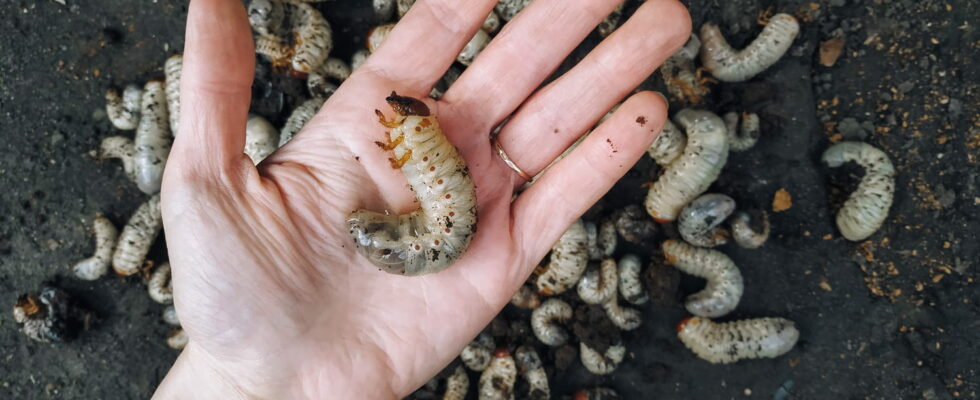The larvae of this insect are the worst for your garden. Here is the solution to eliminate them.
The number one enemy of a lawn is not necessarily drought or weeds. Having a consistently green and lush lawn can be a real challenge for gardeners and garden owners. Even with a lot of attention, it happens that small creatures get into the soil and completely destroy your lawn.
We are not talking about moles here, but about chafer larvae, also called “white worms”. They can give you a real nightmare! These little creatures, often overlooked, are one of the worst scourges for your lawn, and it is crucial to act now to limit the damage. It is in June that the adult beetles reproduce. The female will lay her eggs in the ground. The larvae will hatch a month later.
They will live underground for two years and will devour the roots of the lawn. As they feed on the roots, they weaken the grass blades, leading to yellowed and dead areas. Symptoms of an infestation include discolored patches of grass that easily break away from the soil, often revealing larvae beneath the surface. If the problem is not treated in time, it can lead to the complete destruction of large portions of the lawn.

How do you know if you have chafer larvae under your lawn? If you notice yellowed areas of lawn or birds intensively searching your lawn, it’s time to investigate. Use a shovel to lift suspicious pieces of grass and inspect the roots. If you find larvae, you must intervene and act quickly. They are easily recognized by their white, curved body, with a brownish head and well-developed legs.
The best defense against chafer larvae remains prevention. Monitor your lawn regularly to detect the first signs of infestation. Here’s what to do to combat chafer larvae:
- Auxiliary nematodes: these microscopic worms will eat the larvae. Sold in bags, you will find them in gardening stores. It is advisable to pour them into the watering water and spray it onto the ground.
- Maintaining a healthy, vigorous lawn can help prevent infestations. Water deeply but less frequently to encourage deep roots, and aerate the soil to improve the overall health of your lawn.
